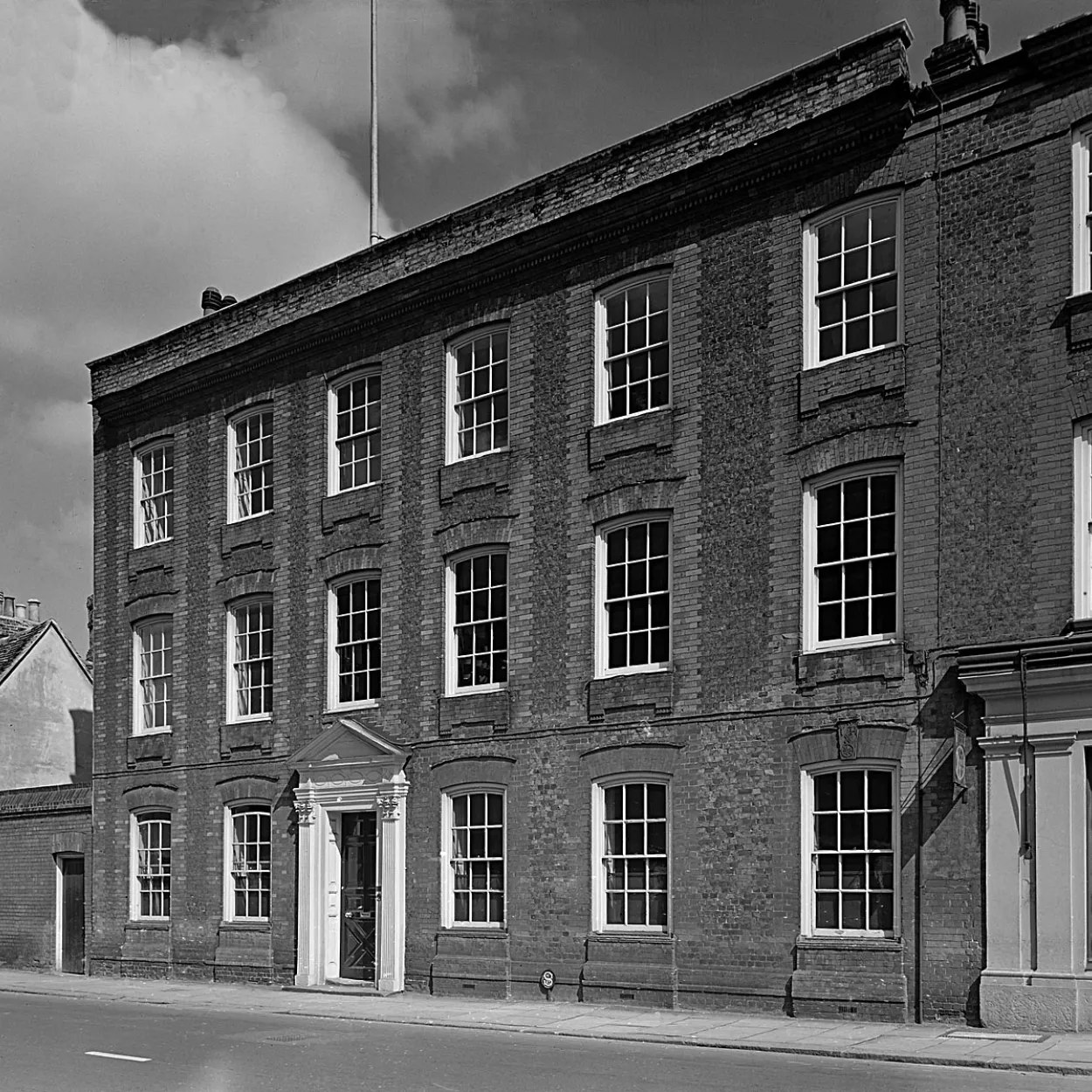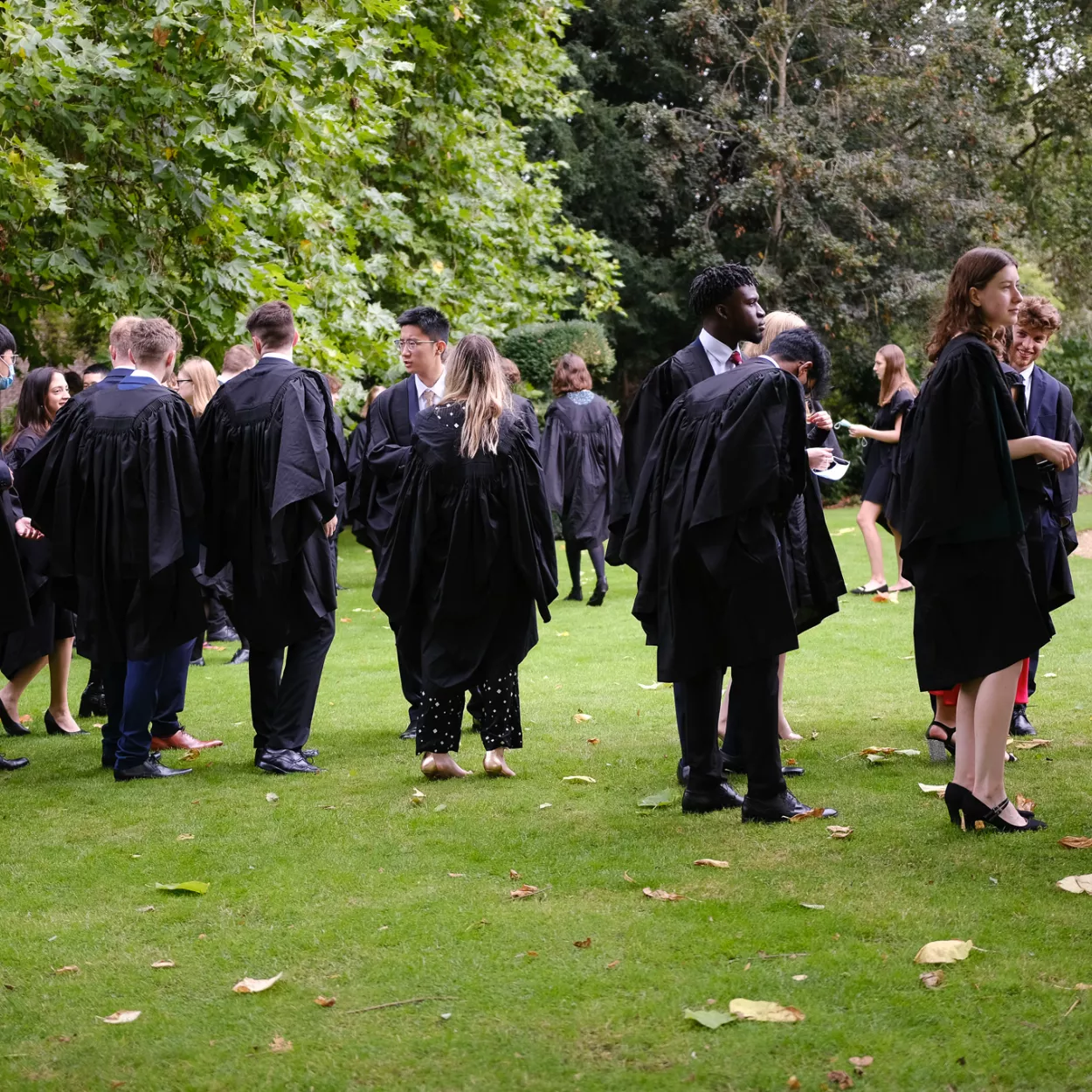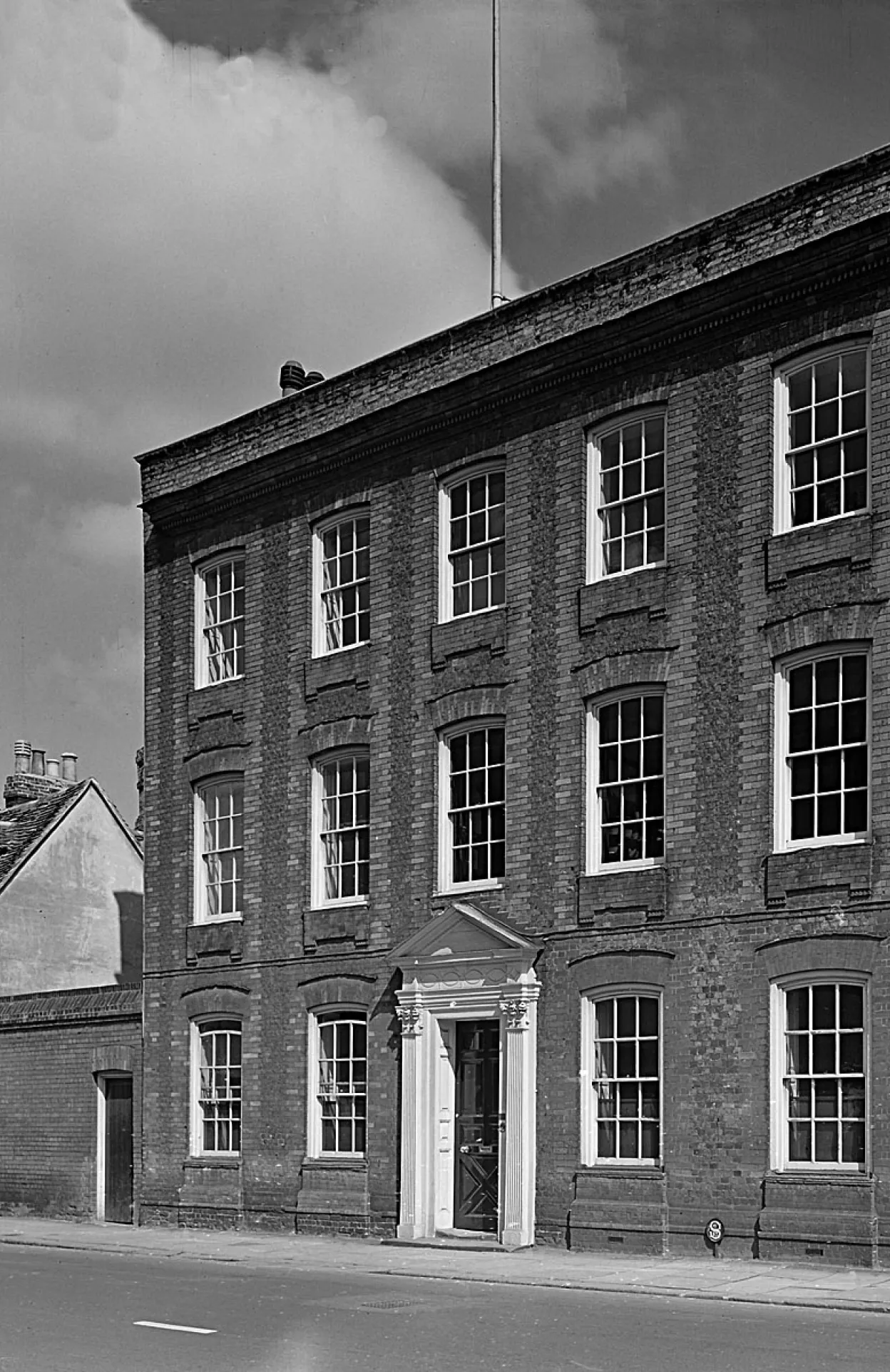
The first 150 years
Fitzwilliam began in 1869 as a non-collegiate institution, providing Cambridge education to undergraduates who were unable to afford membership of a college.
It received in turn the names of Fitzwilliam Hall and Fitzwilliam House, and its members continually strove to enhance its standing. Fitzwilliam moved to its current site in 1963, and in 1966 it was granted a Royal Charter and became an independent college.
Fitzwilliam’s roots lie in University reforms in the nineteenth century. These reforms included the admission of undergraduates without their needing to become members of colleges, which were expensive - students had to buy their own furniture, for example.
The reforms culminated in 1869 in the setting-up of the Non-Collegiate Students Board to oversee students without colleges and to regulate their teaching. The cost of being a ‘non-collegiate’ student at Cambridge was less than half that of being a member of a college, and at the same time access to the University was widened.
Advertisements were placed; one in the Birmingham Daily Post of 1869 reads:
‘Many parents who desire to give their sons the benefit of a University education, at moderate cost, will be glad to know that the University of Cambridge has made very liberal arrangements for the admission of non-collegiate students. Hitherto, students have been received only as members of some college at the University, but henceforth they will be allowed to keep terms by residing with their parents or in lodgings duly licensed, thus escaping the cost of collegiate residence. At the same time all the privileges of the University will be open to them.’
Eight students were admitted in Michaelmas 1869: six were new entrants to the University and two were migrants from colleges. At least six were mature students; two schoolmasters, a surgeon and a man who had lectured in Edinburgh and London.
All ‘non-collegiate’ students lived in lodgings, and Fitzwilliam Hall (later renamed Fitzwilliam House) - situated opposite the Fitzwilliam Museum on Trumpington Street - was where their social and some of their teaching needs were eventually met. While Fitzwilliam Hall was regarded by some as inferior to the colleges, its members continually strove to enhance its standing.
Student numbers grew; in 1874 there were nearly 100; in 1920 over 300. But the process of changing its status from what was technically that of a University Department to a full College was slow. In 1944, the Non-Collegiate Students Board stated explicitly that a new and larger building was needed, and by 1960 land had been purchased by the University and an architect, Denys Lasdun, had been appointed.
Fitzwilliam College has charitable status, and is now a community of around 460 undergraduates, 320 full-time postgraduates 120 part-time postgraduates, 60 Fellows and over 100 staff. The Master is Baroness Sally Morgan.
The full story is told in Fitzwilliam: The First 150 Years of a Cambridge College, available from the College.

Fitz today
The Fitzwilliam motto is 'Ex antiquis et novissimis optima' and while the Latin might feel a little anachronistic, we are proud to embody the message - 'the best of the old and the new'. Throughout our history, Fitzwilliam has sought to find its identity in the space between the very best of the Cambridge traditions - academic rigour and excellence - and a forward-thinking, curious and consciously modern approach to academic life. The need that Fitzwilliam sought to meet in 1869 and in the 1960s may be rather different than that experienced today, but there sits at our core an understanding of the value of education to transform lives, and a determination to support students from all backgrounds to attend Cambridge.
Today our student body is large, diverse, and split equally between those studying undergraduate courses and postgraduate degrees. Each year we admit around 150 undergraduates, and our total student body is around 850 students. The College site, while spacious enough to offer accommodation to all students, offices for academic and non-academic staff and extensive gardens, is geographically quite a small imprint. Most Fitzwilliam students live within five minutes walk of the College site and there is a strong community spirit.
Our academic Fellowship sits at around 60 Fellows, 50 Bye-Fellows and we have recently welcomed a new category of Research Associates, to support the growth of the postdoctoral community in Cambridge.
From the humble beginnings of the Hall, we now have a 13,000 strong alumni community, many of whom are actively engaged in the life of the College today.

